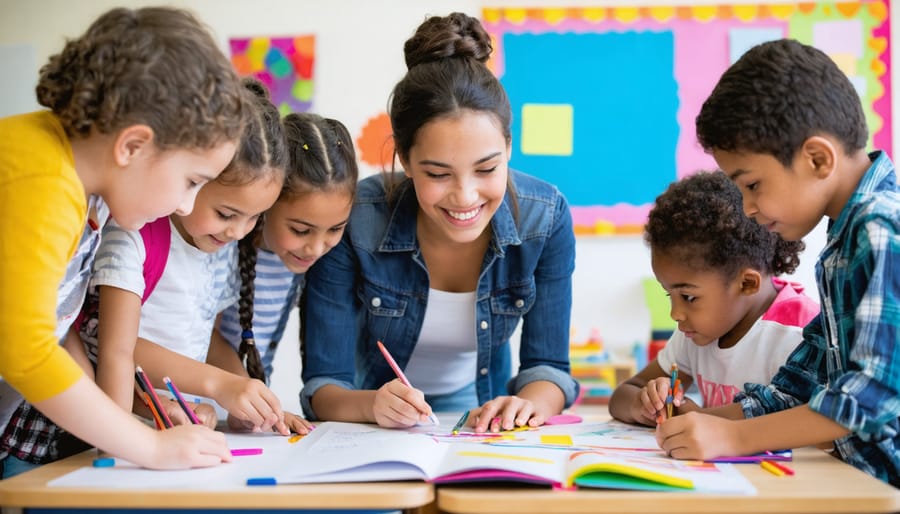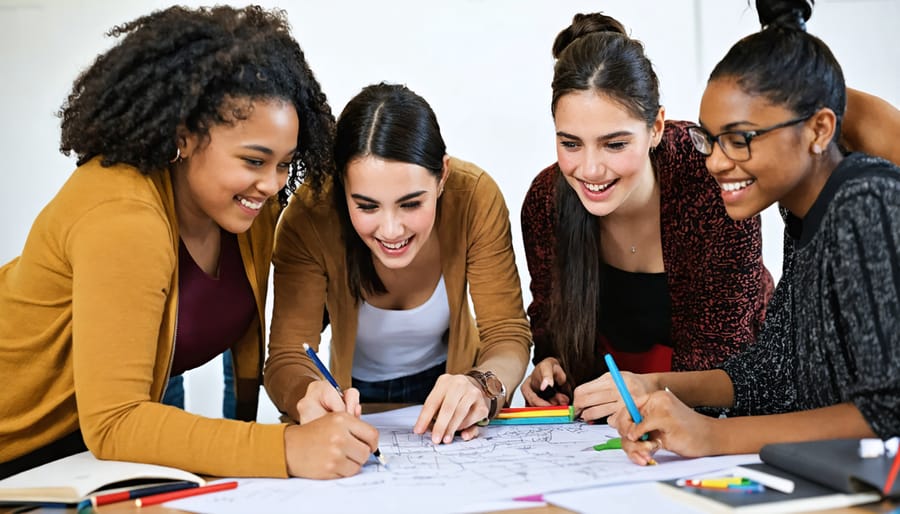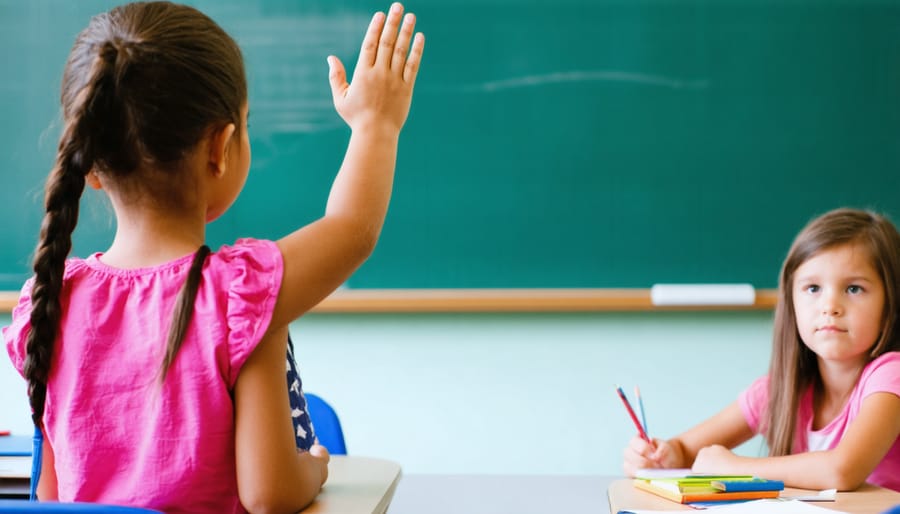
Inject passion into every lesson by connecting topics to real-world relevance. Engage students through interactive activities like debates, role-plays, and hands-on projects. Build strong relationships by showing genuine interest in each learner’s individual needs, interests, and goals. Consistently recognize effort and celebrate successes to boost motivation and camaraderie.
Cultivate Meaningful Relationships
Building strong connections with students is the foundation of an engaged classroom. When teachers take the time to get to know their students as individuals, it fosters a sense of belonging and trust that encourages active participation. One simple yet effective way to build rapport is by greeting each student by name as they enter the classroom. This small gesture shows that you value their presence and sets a positive tone for the day.
Another key strategy is to create opportunities for one-on-one interactions with students. This could be through brief check-ins during independent work time or by scheduling individual conferences to discuss their progress and goals. During these conversations, ask open-ended questions about their interests, hobbies, and aspirations. By showing genuine curiosity and empathy, you demonstrate that you care about their well-being beyond just their academic performance.
Incorporating students’ personal experiences and perspectives into lessons is another powerful way to build connections. When students feel that their voices are heard and valued, they are more likely to engage in class discussions and navigate challenges with confidence. Consider conducting surveys or having students share brief “about me” presentations to learn more about their backgrounds and learning styles.
Remember, building meaningful relationships with students takes time and consistency. By prioritizing these connections and showing authentic interest in their lives, you create a classroom environment where students feel supported, respected, and eager to learn.

Create a Positive Classroom Culture
Creating a positive classroom culture is essential for fostering engaged learning. When students feel safe, respected, and valued, they’re more likely to actively participate and take risks. Start by establishing clear expectations and routines that promote kindness and cooperation. For example, implement a morning meeting where students greet each other and share something positive about their day.
Encourage collaboration by designing activities that require teamwork and problem-solving. Group projects, peer tutoring, and think-pair-share exercises can help students build relationships and learn from one another. Celebrate successes together, whether it’s mastering a difficult concept or reaching a class goal.
As the teacher, model the behavior you want to see. Greet students warmly, listen attentively, and show genuine interest in their lives. When conflicts arise, use restorative practices to help students take responsibility and repair harm. By prioritizing relationships and empowering students to be active participants in their learning community, you’ll create a classroom culture that inspires engagement and growth.
Remember, building a positive classroom culture takes time and consistent effort. Be patient, stay committed, and watch as your students blossom into enthusiastic learners who support and challenge each other to reach new heights.
Design Interactive Lessons

Incorporate Technology Wisely
Technology, when used strategically, can be a powerful tool to boost engagement in the classroom. The key is to incorporate educational apps, interactive whiteboards, or online resources that encourage active participation and collaboration among students. For example, using a real-time polling app allows students to provide instant feedback and share their thoughts, making them feel heard and valued. Virtual reality and augmented reality experiences can transport students to different eras or locations, immersing them in the subject matter and igniting their curiosity. However, it’s crucial to strike a balance and ensure that technology enhances, rather than distracts from, the learning process. By setting clear guidelines and objectives for technology use, teachers can harness its potential to create a more dynamic and interactive classroom environment that keeps students engaged and excited about learning.
Empower Student Voice and Choice
Giving students a voice in their education empowers them to take ownership of their learning journey. When teachers create opportunities for student-led discussions and self-directed projects, it fosters a sense of autonomy and intrinsic motivation. By allowing students to choose topics that interest them or explore questions they’ve always wondered about, we tap into their natural curiosity and desire to learn.
Student-led discussions can transform the classroom dynamic, shifting from a teacher-centered approach to a collaborative learning environment. When students facilitate conversations, they develop critical thinking skills, learn to articulate their ideas effectively, and gain confidence in their ability to contribute meaningfully. These discussions also promote active listening and respectful dialogue, essential skills for success in both academic and professional settings.
Self-directed projects give students the freedom to explore their passions while developing important life skills such as time management, research, and problem-solving. When students have the autonomy to design their own learning experiences, they are more likely to engage deeply with the material and retain the knowledge they acquire. These projects also provide opportunities for students to showcase their unique talents and strengths, boosting their self-esteem and sense of accomplishment.
By empowering student voice and choice, we create a classroom culture that values individual perspectives and fosters a love of learning. When students feel heard and respected, they are more likely to take risks, ask questions, and actively participate in their education. As educators, we have the power to nurture our students’ innate curiosity and help them become lifelong learners by giving them agency in their learning journey.
Franchise Restaurants Demystified: What They Are and How They Work provides insights into how the real-world application of classroom learning connects with practical business ventures.

Provide Frequent Feedback
Providing frequent, constructive feedback is essential for keeping students engaged and motivated in the classroom. As teachers, we should aim to offer timely and specific feedback that celebrates successes and guides students towards improvement. One effective strategy is to use a mix of verbal and written feedback, tailoring your approach to each student’s learning style. For example, you might offer quick verbal praise during class discussions, followed up with more detailed written comments on assignments.
When giving feedback, focus on being constructive and actionable. Instead of simply pointing out mistakes, provide concrete suggestions for how students can improve their work. This helps create a growth mindset and shows students that you believe in their ability to learn and progress. Another key aspect of effective feedback is consistency. Make an effort to regularly check in with students, both individually and as a group, to discuss their progress and address any concerns. By maintaining open lines of communication and offering frequent, supportive feedback, you’ll foster a classroom environment where students feel valued, motivated, and truly engaged in the learning process.
Make Learning Relevant
To make learning more relevant and engaging for your students, focus on connecting lessons to real-world applications. By showing how the concepts they’re studying apply to their lives outside the classroom, you can spark curiosity and enthusiasm. One effective approach is to incorporate current events or familiar scenarios into your lessons. For example, when teaching math, you might discuss how percentages are used in sales tax or tipping at restaurants.
Another way to make learning relevant is by tapping into your students’ interests and experiences. Take time to get to know them as individuals – their hobbies, goals, and challenges. Then, look for opportunities to weave these elements into your lessons. If you have a student passionate about music, you could explore the science of sound waves or the history of a particular genre. By making these personal connections, you show students that their unique perspectives are valued and that education extends beyond the walls of the classroom.
Remember, when students feel that their learning has purpose and meaning, they’re more likely to engage deeply with the material and retain the knowledge long-term. So, keep an eye out for those real-world applications and personal touchpoints – they can make all the difference in creating an engaged, dynamic classroom.
Conclusion
By implementing these seven secrets of engaged classrooms, you can transform your students’ learning experience and create a dynamic, interactive environment that fosters growth and success. Remember, every class is unique, so experiment with different strategies to discover what resonates best with your group. Building strong relationships, encouraging active participation, leveraging technology thoughtfully, and celebrating progress are all key ingredients in the recipe for engagement. As you embark on this journey, keep an open mind and be willing to adapt your approach as needed. With dedication and a genuine passion for teaching, you have the power to transform your family of learners and inspire a lifelong love for education. Embrace the challenge, trust your instincts, and watch your classroom come alive with the joy of engaged learning.



